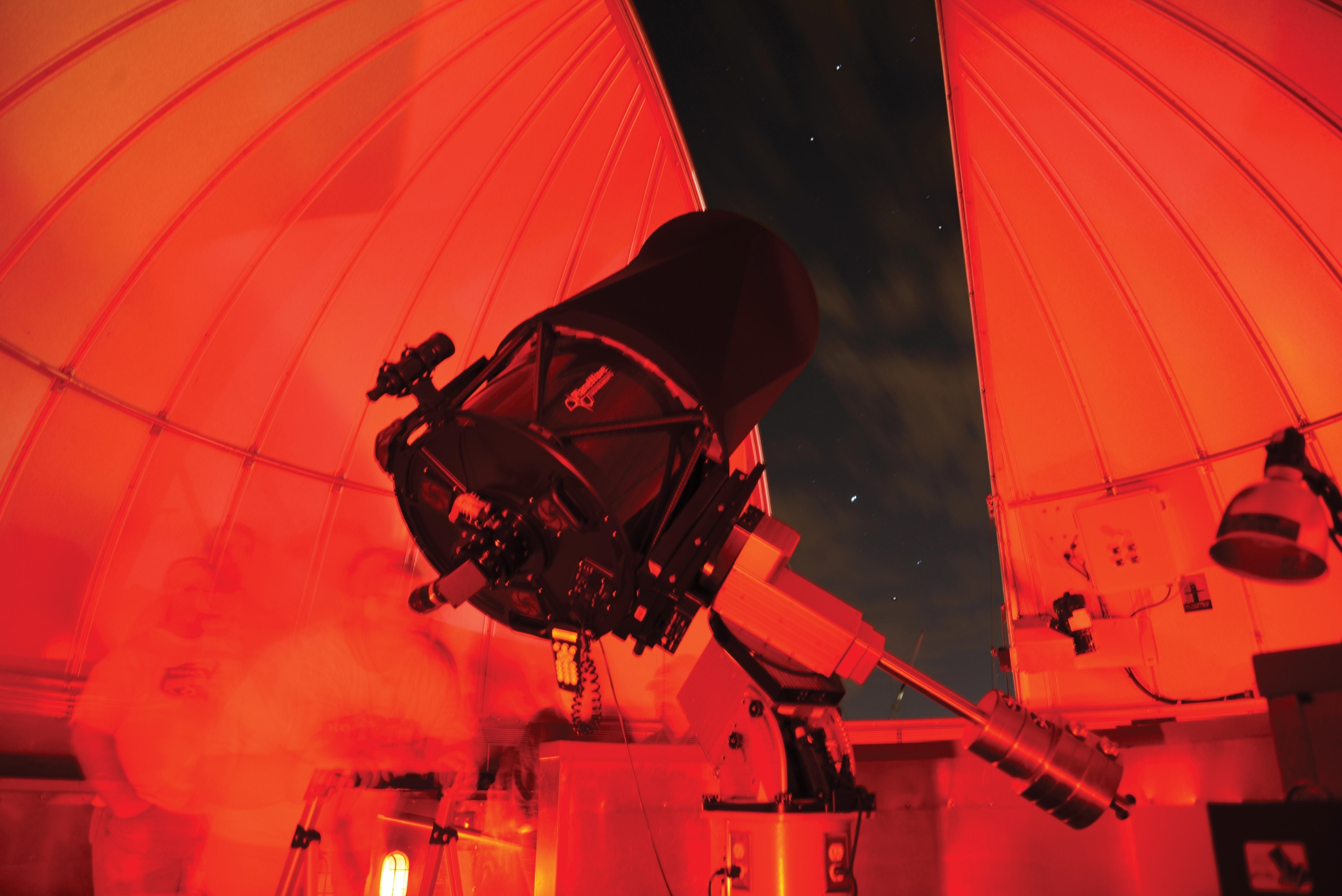USU Observatory satisfies public’s interest in space
Clouds parted Friday night, enabling spring’s first public observatory night at USU.
The USU Observatory, located on the roof of the Science Engineering Research building, was open from 9-11 p.m. Students and families from around Cache Valley came to look at distant objects through the large telescope.
“Our goal is to let people experience this telescope, to get a glimpse of what’s out there,” said James Coburn, the department of physics laboratory supervisor.
Those who attended Friday night used both the large telescope inside the observatory dome and five smaller telescopes grouped around the rooftop.
Coburn said the public observatory nights usually draw 50-200 attendees. By 9:30, the public night had already drawn a small crowd of about 40 people.
“Seeing Jupiter was my favorite because you could see its four moons,” said Isaac, a 12-year-old.
Both Mars and Jupiter were visible through different telescopes. In the large telescope, some participants could even make out the famous bands of color for which Jupiter is well-known.
“I liked looking at the star cluster. It was 90 light-years across,” said Kiley, a 10-year-old.
The observatory is normally open for student projects and as a student lab for astronomy courses. Coburn said the physics department makes it available a few times during the spring and fall for public outreach activities. In the spring, these events are largely weather-dependent.
Public interest in astronomy is increasing with recent announcements concerning discoveries in the Solar System.
The discovery of a new dwarf planet beyond Pluto captured science headlines back in March. Scott Sheppard, an astronomer with the Carnegie Institute, said the dwarf planet, known as VP 113, was first photographed in November 2012. Scientists determined its orbit by August 2013 and then published their findings.
VP 113, nicknamed “Biden,” is located in the region known as the Oort Cloud. Its distance from the earth is about 2.5 times the distance of Pluto from Earth.
The first object found in the Oort Cloud was the dwarf planet Sedna, discovered in 2003. The discovery of “Biden” indicates there are more objects out in that region of the Solar System.
“There is probably a large population of objects, most likely over 1,000. Some could even be Earth-sized,” Sheppard said.
Sheppard said topics in science, as a rule, are always expanding and being re-classified. Discovery and reclassification is part of the story of Pluto, which was once known as one of the primary planets of the Solar System before being reclassified as a dwarf planet.
Pluto was thought to be unique from the time of its discovery in 1930 until 1992. In 1992, new objects were discovered in the region which is now known as the Kuiper Belt. James Coburn said the first, known as Eres, was named after the Greek goddess of discord in thanks to the amount of discussion it created in astronomy.
Now the definition of the Solar System is being stretched once again with the discovery of objects like Sedna and “Biden.”
“We keep pushing the boundaries out on our Solar System. How did these objects form?” Coburn said.
“It’s important to know that we don’t know everything that’s out there,” Scott Sheppard said.
For more information on the discovery of VP 113: http://home.dtm.ciw.edu/users/sheppard/ inner_oort_cloud/
If interested in attending a public observatory night: http://www.physics.usu.edu/observatory/ Site/index.html
– david.berg@aggiemail.usu.edu

